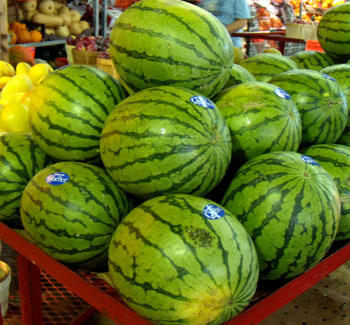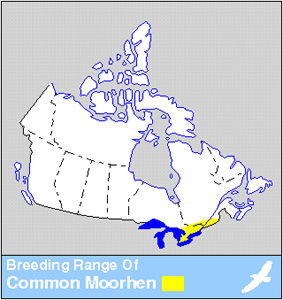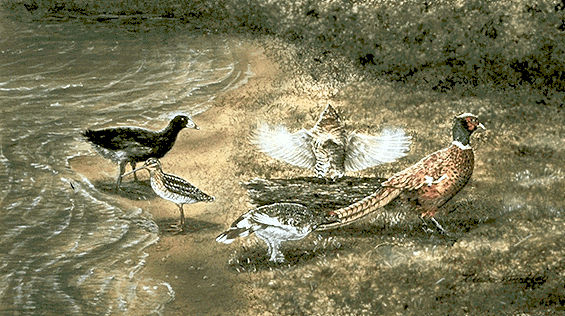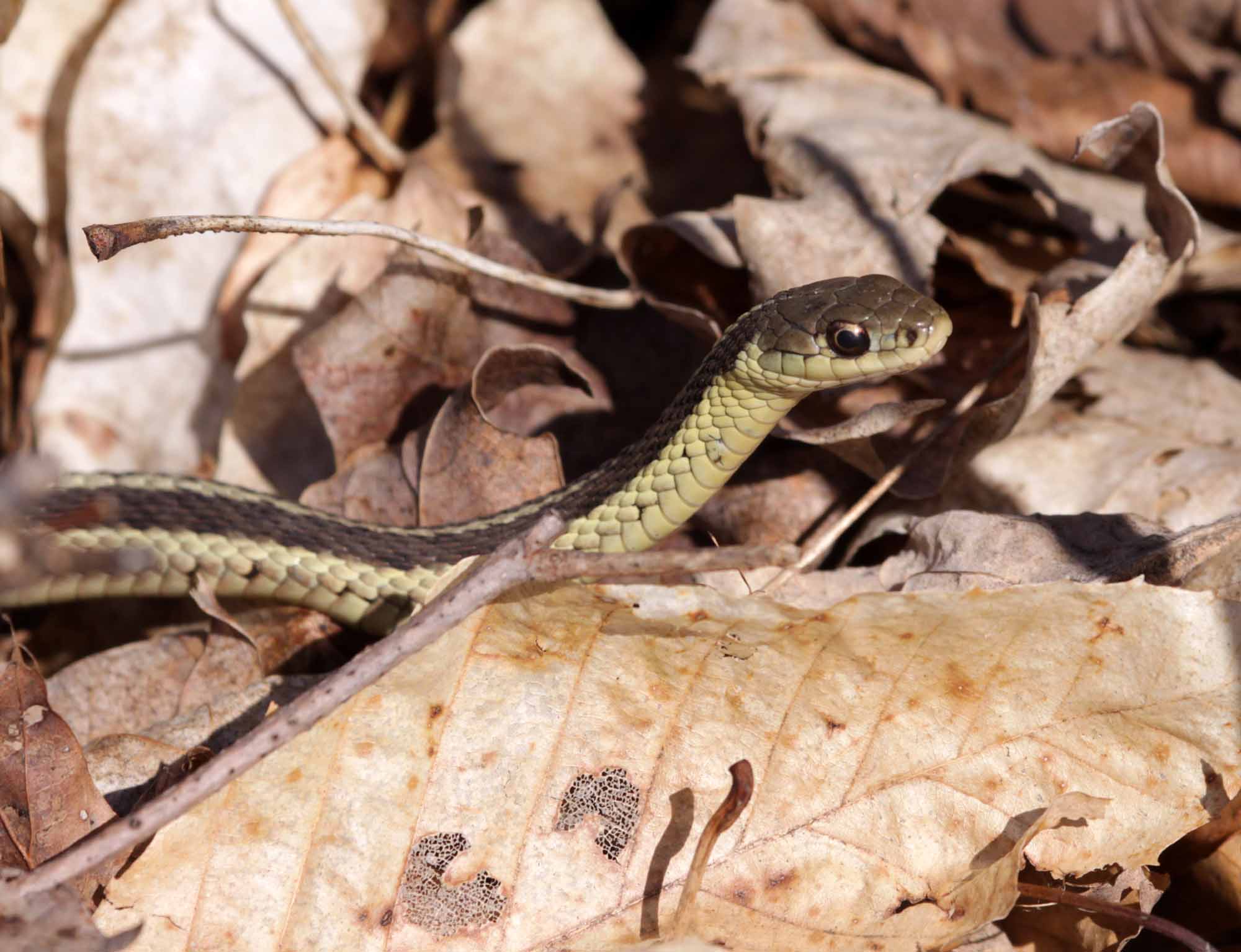Browse "Nature & Geography"
-
Article
Fraser River Lowland
The Fraser River Lowland is a triangular area in southwestern British Columbia. The eastern apex of the triangle is at Hope, about 160 km inland from the Strait of Georgia. From here, the lowland broadens to the west to a width of about 50 km. The international boundary between British Columbia and Washington State crosses the southwestern part of the lowland. The Coast Mountains form the northern boundary of the delta-lowland. The Fraser River Lowland is the largest area of level land with suitable agricultural soils in coastal British Columbia.
"https://d2ttikhf7xbzbs.cloudfront.net/media/new_article_images/FraserRiverLowland/FraserRiverLowlandMap.png" // resources/views/front/categories/view.blade.php
https://d2ttikhf7xbzbs.cloudfront.net/media/new_article_images/FraserRiverLowland/FraserRiverLowlandMap.png
-
Article
F. Kenneth Hare
Frederick Kenneth Hare, CC, FRSC, environmental scientist, professor, administrator (born 5 February 1919 in Wylye, England; died 3 September 2002 in Oakville, ON). F. Kenneth Hare has been widely recognized for his research contributions in climatology and biogeography. During his career, he participated in several committees and commissions concerned with environmental issues, such as climate change, nuclear reactors and nuclear waste and acid rain (see Nuclear Energy).
"https://d2ttikhf7xbzbs.cloudfront.net/TCE_placeholder.png" // resources/views/front/categories/view.blade.php
https://d2ttikhf7xbzbs.cloudfront.net/TCE_placeholder.png
-
Article
Freshwater Institute (FWI)
The Freshwater Institute, located on the University of Manitoba campus in Winnipeg, Man, is one of the world's leading research centres for freshwater and Arctic fisheries research.
"https://d2ttikhf7xbzbs.cloudfront.net/media/media/8ff204ea-7793-42b9-9f34-39964ccf0d12.jpg" // resources/views/front/categories/view.blade.php
https://d2ttikhf7xbzbs.cloudfront.net/media/media/8ff204ea-7793-42b9-9f34-39964ccf0d12.jpg
-
Macleans
Friedland's Environmental Problems
"I don't understand. Is this a loaded question?" The line of query had not been terribly abstract.This article was originally published in Maclean's Magazine on September 9, 1996
"https://development.thecanadianencyclopedia.ca/images/tce_placeholder.jpg?v=e9dca980c9bdb3aa11e832e7ea94f5d9" // resources/views/front/categories/view.blade.php
https://development.thecanadianencyclopedia.ca/images/tce_placeholder.jpg?v=e9dca980c9bdb3aa11e832e7ea94f5d9
-
Article
Frog Species in Canada
Frogs are amphibians belonging to the order Anura. Worldwide, frogs are the most numerous group of amphibians, with more than 5,000 living species. They are found on all continents except Antarctica. There are 24 species of frog currently found in Canada. In addition, one species, the Blanchard’s cricket frog, is extirpated. This means that, while it continues to live in other parts of its range, it is no longer found in Canada. Five of Canada’s frog species are toads, which are frogs belonging to the family Bufonidae. While most frog species in Canada are found in the southern reaches of the country, a few, for example the boreal chorus frog, have ranges extending into Yukon and the Northwest Territories, and in the case of the wood frog, Nunavut.
"https://d2ttikhf7xbzbs.cloudfront.net/FrogSpeciesInCanada/AmericanBullfrog.jpg" // resources/views/front/categories/view.blade.php
https://d2ttikhf7xbzbs.cloudfront.net/FrogSpeciesInCanada/AmericanBullfrog.jpg
-
Article
Fruit and Vegetable Industry
This important sector of Canada's FOOD AND BEVERAGE INDUSTRIES is made up of companies that process fruits and VEGETABLES.
"https://d2ttikhf7xbzbs.cloudfront.net/media/media/c5d66760-a348-43b1-af55-7b9263c442cb.jpg" // resources/views/front/categories/view.blade.php
https://d2ttikhf7xbzbs.cloudfront.net/media/media/c5d66760-a348-43b1-af55-7b9263c442cb.jpg
-
Article
Fruit Cultivation
Fruit growing is an important part of Canada’s food industry. Growing is usually restricted to areas where winter temperatures do not go much below -20°C.
"https://d2ttikhf7xbzbs.cloudfront.net/media/media/a2ab80b2-d4e9-4e51-aef5-dd1615e358f8.JPG" // resources/views/front/categories/view.blade.php
https://d2ttikhf7xbzbs.cloudfront.net/media/media/a2ab80b2-d4e9-4e51-aef5-dd1615e358f8.JPG -
Article
Fungus
All members of the kingdom Fungi are commonly known by the same name, fungus. Fungi have some characteristics in common with both plants and animals, yet they are an independent group. Plants, animals and fungi are thought to have a common ancestor, probably a simple eukaryotic (cells having distinct nuclei) organism highly unlike its modern descendants. Evidence suggests that fungi and animals are more closely related to each other than either is to plants. Like animals, all fungi lack chlorophyll and cannot carry out photosynthesis.
"https://d2ttikhf7xbzbs.cloudfront.net/fungus/Decorated-Mop.jpg" // resources/views/front/categories/view.blade.php
https://d2ttikhf7xbzbs.cloudfront.net/fungus/Decorated-Mop.jpg
-
Article
Fur Trade in Canada (Plain-Language Summary)
The fur trade began in the 1600s in what is now Canada. It continued for more than 250 years. Europeans traded with Indigenous people for beaver pelts. The demand for felt hats in Europe drove this business. The fur trade was one of the main reasons that Europeans explored and colonized Canada. It built relationships between Europeans and Indigenous peoples. (This article is a plain-language summary of the fur trade. If you are interested in reading about this topic in more depth, please see our full-length entry, Fur Trade in Canada.)
"https://d2ttikhf7xbzbs.cloudfront.net/media/article_files/fur-trade/c002771k.jpg" // resources/views/front/categories/view.blade.php
https://d2ttikhf7xbzbs.cloudfront.net/media/article_files/fur-trade/c002771k.jpg
-
Article
Gallinule
Gallinule is a common name for some marsh-dwelling birds of the rail family (Rallidae), now also known as moorhens.
"https://d2ttikhf7xbzbs.cloudfront.net/media/media/7a9dff00-31fa-400c-910d-dbc148c48f73.jpg" // resources/views/front/categories/view.blade.php
https://d2ttikhf7xbzbs.cloudfront.net/media/media/7a9dff00-31fa-400c-910d-dbc148c48f73.jpg
-
Article
Game Bird
Game bird is not a scientific term, but refers to any bird that is hunted. There are 2 categories in Canada, migratory and nonmigratory.
"https://d2ttikhf7xbzbs.cloudfront.net/media/media/82572582-06cb-4165-a0ba-fbb3f8e521d1.jpg" // resources/views/front/categories/view.blade.php
https://d2ttikhf7xbzbs.cloudfront.net/media/media/82572582-06cb-4165-a0ba-fbb3f8e521d1.jpg
-
Article
Gannet
The gannet, or northern gannet (Sula bassanus) is a large, long-winged seabird, white except for conspicuous black wing tips and yellowish tinged head.
"https://d2ttikhf7xbzbs.cloudfront.net/media/media/b2be0d1b-9e0f-4794-997a-2ec03cbfab51.jpg" // resources/views/front/categories/view.blade.php
https://d2ttikhf7xbzbs.cloudfront.net/media/media/b2be0d1b-9e0f-4794-997a-2ec03cbfab51.jpg
-
Article
Gar
Gar, large, slender, thick-scaled, predatory fish of family Lepisosteidae, order Semionotiformes, class Actinopterygii. Gars are found in fresh waters of eastern N America, Central America and Cuba, occasionally in brackish water and, rarely, in the sea.
"https://d2ttikhf7xbzbs.cloudfront.net/media/media/120636ae-9a48-4754-a80f-9db3245a83bc.jpg" // resources/views/front/categories/view.blade.php
https://d2ttikhf7xbzbs.cloudfront.net/media/media/120636ae-9a48-4754-a80f-9db3245a83bc.jpg
-
Article
Common Gartersnake
The common gartersnake (Thamnophis sirtalis) is a relatively small, striped, non-venomous snake. It is one of the most widespread snake species in North America, and its range extends farther north than that of any other North American snake. In Canada, it is found in every province, as far north as James Bay and into the southernmost Northwest Territories. The common gartersnake is broken into five subspecies across Canada: the Maritime gartersnake (Thamnophis s. pallidulus; PEI, NS, NB, QC), the Eastern gartersnake (Thamnophis s. sirtalis; QC, ON), the red-sided gartersnake (Thamnophis s. parietalis; ON, MB, SK, AB, BC, NWT), the valley gartersnake (Thamnophis s. fitchi; BC), and the Puget Sound gartersnake (Thamnophis s. pickeringii; BC).
"https://d2ttikhf7xbzbs.cloudfront.net/media/media/beedc924-6a22-466a-85c8-fb8e97a802e1.jpg" // resources/views/front/categories/view.blade.php
https://d2ttikhf7xbzbs.cloudfront.net/media/media/beedc924-6a22-466a-85c8-fb8e97a802e1.jpg
-
Article
Gemstone
Canada's first DIAMOND mine - the Ekati mine near Lac de Gras, NWT - began production in 1998. Most of the diamond production is exported, but a small percentage is reserved for cutting in Canada.
"https://d2ttikhf7xbzbs.cloudfront.net/media/media/5a4c4cc1-df46-4365-8480-fa8562884413.jpg" // resources/views/front/categories/view.blade.php
https://d2ttikhf7xbzbs.cloudfront.net/media/media/5a4c4cc1-df46-4365-8480-fa8562884413.jpg

